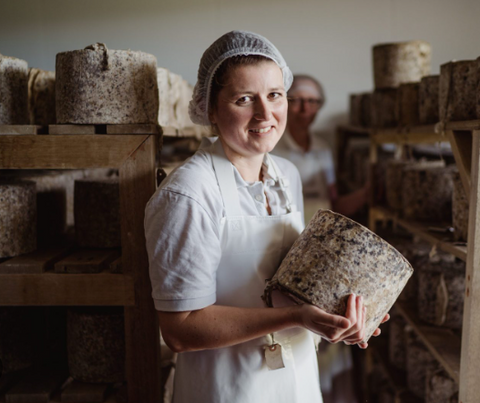From Thomastown to Your Table: The Quality of Floridia Cheese Melbourne
From Thomastown to Your Table: The Quality of Floridia Cheese Melbourne
Blog Article
Unlocking the Keys of Artisanal Cheese Making: A Step-by-Step Do It Yourself Guide
In the realm of culinary workmanship, artisanal cheese making stands as a testimony to the delicate equilibrium in between tradition and innovation. Each action in the process, from selecting the appropriate milk to improving aging methods, holds within it a riches of expertise passed down through generations. As we embark on this journey to demystify the art of developing exquisite cheeses, we are confronted with a tapestry of keys and abilities waiting to be unwinded. Join us as we check out the complexities of this old craft, where scientific research, persistence, and art merge to produce tastes that tantalize the detects.
Choosing the Right Milk
When starting the journey of artisanal cheese making, the choice of milk plays an essential duty in establishing the quality and attributes of the end product. The kind of milk chosen affects the taste, structure, and on the whole profile of the cheese. Raw milk, right from the animal, is liked by several artisanal cheesemakers as a result of its unique mix of enzymes, bacteria, and flavor compounds. Nevertheless, using raw milk includes dangers and guidelines, making sterilized milk a safer choice for novices.
Furthermore, the source of the milk, whether from cows, goats, sheep, or buffalo, contributes distinct flavors and attributes to the cheese. Each kind of milk brings its own subtleties, enabling for a wide range of cheese selections to be crafted based on the chosen milk.
Culturing and Coagulating
To start the cheese-making procedure, the essential steps of culturing and coagulating should be thoroughly executed to change milk right into curds and whey. Culturing involves presenting advantageous germs to the milk, which after that starts the fermentation process. These microorganisms transform lactose (milk sugar) right into lactic acid, producing the acidic environment necessary for coagulation. The kind of society used can substantially impact the taste, texture, and ripening of the final cheese item.

The timing and temperature level control during culturing and coagulation are crucial factors that influence the last result of the cheese. Correct execution of these actions is vital to guarantee the desired appearance, flavor, and uniformity of the artisanal cheese being created.
Draining and Pushing Curds
After the milk healthy proteins have actually coagulated and the curds have actually been cut to launch whey, the following critical action in artisanal cheese making includes draining pipes and pressing the curds to accomplish the desired structure and consistency of the last cheese product. The time for draining pipes can differ depending on the type of cheese being made and the wanted moisture web content.
As soon as the curds have actually completely drained pipes, the next step is pressing. Pushing aids get rid of any kind of staying whey and compacts pop over to these guys the curds to form a strong cheese wheel. Pushing can be done using specialized cheese presses that use regular and gentle pressure over a period of time. The period and pressure used during pushing will certainly affect the final structure of celebrity, from soft and creamy to hard and company. Proper pushing and draining are crucial actions that dramatically influence the high quality and characteristics of the artisanal cheese being created.
Aging and Flavor Methods
Applying meticulous aging and flavoring strategies is essential in boosting the depth and intricacy of artisanal cheeses, raising their preference accounts to exquisite degrees of improvement and sophistication. Aging plays an important duty in establishing the unique flavors and appearances that distinguish artisanal cheeses. Throughout the aging process, cheeses are saved in very carefully regulated environments where aspects such as air movement, moisture, and temperature level are adjusted to encourage the growth of useful mold and mildews and bacteria. This controlled setting permits the cheese to develop gradually, establishing complicated fragrances and rich tastes.
Seasoning techniques likewise contribute dramatically to the last preference of artisanal cheeses. Cheesemakers may choose to present added tastes by incorporating active ingredients such as herbs, spices, or even fruits right into the cheese during the manufacturing process. In addition, some cheeses are washed or rubbed with various fluids, such as salt water or alcohol, to improve their textures and tastes.
Covering and Saving Cheeses

Verdict
To conclude, mastering the art of artisanal cheese making includes carefully choosing the ideal milk, following exact culturing and coagulating processes, draining pipes and pushing curds successfully, and making use of different aging and flavoring strategies. By following these actions faithfully and with focus to information, you can produce your very own scrumptious and special cheeses in your home. website here Bear in mind to wrap and keep your cheeses effectively to guarantee optimum flavor and structure growth. Delighted cheese making!
Each kind of milk brings its own subtleties, enabling for a vast range of cheese selections to be crafted based on the selected milk.After the milk healthy proteins have actually coagulated and the curds have actually been reduced to release whey, the following crucial action in artisanal cheese making involves draining pipes and pressing the curds to accomplish the wanted appearance and consistency of the last cheese item. The majority of cheeses should be covered in wax paper or cheese paper to permit them to take a breath while protecting them from drying out. For cheeses that require to proceed aging, such as bloomy peels or washed peels, ensure they are kept in a great environment like a cheese cave or a fridge set to the suitable temperature. By paying attention to the covering and storage of artisanal cheeses, cheese makers and fanatics can maintain the honesty of these specials and completely enjoy their complicated tastes.
Report this page